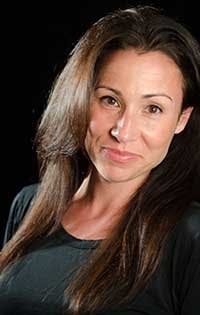Roundtable: Water Scarcity Will Bring Change to Data Center Design, Location
The scarcity of water will bring change to how data centers are designed and where they are located, according to panelists in our DCF Data Center Executive Roundtable. That may mean shifting to different cooling technologies or more efficient hardware, and taking a harder look at where data centers are built, our experts say.
Our panelists include Ryan Baumann from Kohler Power Systems, Rhea Williams of Oracle and Infrastructure Masons, and TMGCore CEO JD Enright. The conversation is moderated by Rich Miller, the founder and editor of Data Center Frontier. Here’s today’s discussion:
Data Center Frontier: Water scarcity has become a major concern in some data center markets. What are the best strategies to help reduce the impact of IT infrastructure on local water supplies?
RHEA WILLIAMS, Oracle and Infrastructure Masons.
Rhea Williams, Oracle and Infrastructure Masons: Walking away from utilizing water as the predominant source of cooling is imminent. We are already seeing suppliers looking to alternatives to traditional water cooling. I don’t know if that’s air, liquid or another upcoming technology.
As an industry we have to drive less water utilization to give relief to the local water supplies but mostly for sustainability reasons.
We talk a lot about power constraints, but I believe water will be next big global issue.
JD ENRIGHT, TMGcore
John-David Enright, TMGcore: I may be a bit biased, however, one must consider technologies that require/demand less water for cooling purposes. When possible, use Dry Cooling technologies for final heat rejection rather than evaporative systems. Of course, this is geography- dependent and is not always an option.
However, having HPC and related technologies that allow for “Lights-Out” operation allow for data centers to be designed and constructed with little HVAC infrastructure for personal comfort and or data center hardware operational needs. One such technology is liquid (non-water) immersion HPC systems.
RYAN BAUMANN, Kohler Power Systems
Ryan Baumann, Kohler Power Systems: The most important consideration in real estate is location. Data center real estate and site selection requires striking a balance between proximity to data consumption, existing IT infrastructure, and reliable / affordable utilities. The modular and scalable aspects of electrical utilities allow data center operators considerable flexibility through substation planning, renewable build outs, and onsite generation.
However, water is a finite resource that is challenging to scale past what is already naturally available. Data centers must balance their design with what is realistic and sustainable for the geography of markets they wish to serve. Put differently, some communities need water more than they need fast data.
“Some communities need water more than they need fast data.”
-Ryan Baumann, Kohler Power Systems
So, to best reduce water consumption data centers will have to redesign and reimagine cooling – CPUs that can operate at higher temperatures and for longer, dynamically migrate high demand workloads to areas where free-cooling is possible, and optimize thermal exchange through new technologies like immersion cooling. As companies work feverishly to reduce their carbon footprint, it will be necessary to drive just as passionately to reduce their water consumption.
NEXT: What’s the outlook for data center growth in secondary markets?
Keep pace with the fact-moving world of data centers and cloud computing by following us on Twitter and Facebook, connecting with DCF on LinkedIn, and signing up for our weekly newspaper using the form below:









